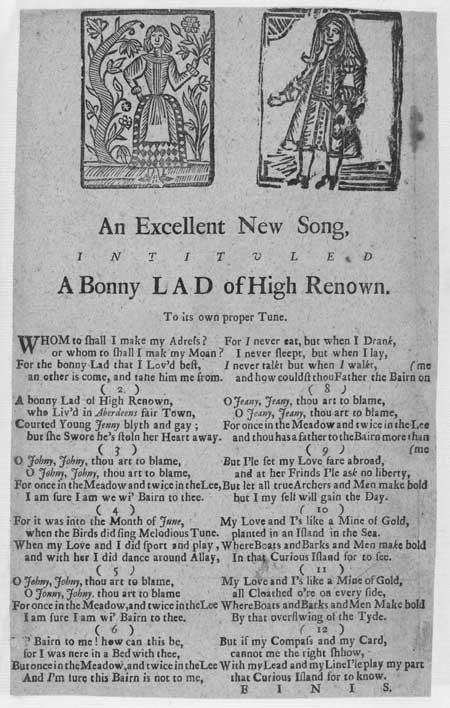Commentary
This ballad begins: 'Whom to shall I make my Adress? / or whom to shall I mak my Moan? / the bonny Lad that I Lov'd best, / an other is come and tane him me from.' The text preceding it reads: 'An Excellent New Song / INTITULED / A Bonny LAD of High Renown / To its own proper Tune.' The two woodcuts on this page would have made the sheet more attractive to purchasers, especially as the sheet was bought for group perusal and not everyone would have been literate. Woodcuts are visual rhetoric and use instantly recognisable symbols. Here the man and woman suggest it is a love or courtship song. The girl is standing in an apron amongst foliage implying perhaps a rural setting. The gentleman wears a splendid frock and wig representing his social standing and wealth. These themes are all then reflected in the verses. Early ballads were dramatic or humorous narrative songs derived from folk culture that predated printing. Originally perpetuated by word of mouth, many ballads survive because they were recorded on broadsides. Musical notation was rarely printed, as tunes were usually established favourites. The term 'ballad' eventually applied more broadly to any kind of topical or popular verse.
View Transcription | Download PDF Facsimile
|


